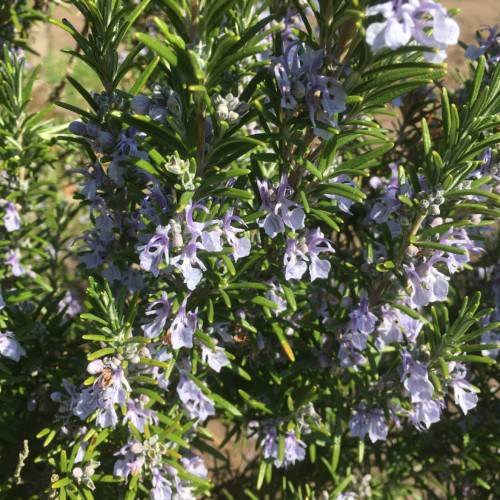
rosemary
Salvia rosmarinus 'Joyce DeBaggio'
Cycle:
Perennial
Watering:
Minimum
Hardiness Zone:
8 - 10
Flowers:
Flowers
Sun:
Full sun
Leaf:
Yes
Growth Rate:
Low
Maintenance:
Moderate
Salt Tolerant:
Yes
watering
Rosemary (Salvia rosmarinus 'Joyce DeBaggio') require very little water and should be watered approximately once every 2 weeks. Water the base of the plant until the soil is moist but not soggy. If the soil is very dry, water until it is saturated and excess water begins to run out of the drainage holes. Be sure to avoid overwatering, as rosemary plants do not like wet feet. Do not water again until the soil feels dry to the touch.
sunlight
Rosemary (Salvia rosmarinus 'Joyce DeBaggio') prefers at least 6-8 hours of direct sunlight each day. Morning sun is best as the plant can dry out after the midday heat. It does not do well in shady or overly humid areas. Rosemary will produce its best growth, aroma, and flavor when grown in a location that receives full sun from spring to fall.
pruning
Pruning rosemary (Salvia rosmarinus 'Joyce DeBaggio') is important for keeping the plant healthy and looking its best. Prune rosemary in late winter or early spring, before new spring growth begins, when the plant is still dormant. Rosemary will continue to grow throughout the year, so regular and frequent pruning is recommended. Start by removing dead, damaged, or diseased wood. If you notice the plant becoming leggy or stretched out, selectively remove the oldest, woodiest stems. If the plant has grown too large, cut it back by up to 1 third of its size. Regularly remove 1 or 2 of the old, long stems to encourage bushier new growth. Make sure to use sharp, clean pruning shears when pruning. After pruning, fertilize the plant for healthier growth.
